Top Reasons for Aging Wood for a Vintage Look
1. Enhances Aesthetic Appeal
Aging wood for a vintage look can significantly improve the aesthetic appeal of furniture and decor. The natural patina and weathered texture that develops over time give the wood a sense of history and charm. This aged appearance adds character to the piece, making it stand out as a unique, rustic, or antique element in your home. Whether it’s for furniture, flooring, or decorative accents, the timeworn look can create a warm and inviting atmosphere, perfect for those who love a vintage or farmhouse style. Aging wood for a vintage look enhances the wood’s natural grain, highlighting its beauty and making it appear timeless.
2. Increased Durability
Aging wood not only improves its visual appeal but can also increase its durability. The natural process of weathering or intentionally distressing wood can help make it more resistant to wear and tear. For example, exposing wood to controlled environmental factors like sunlight or moisture can harden the fibers, making it stronger and less prone to damage. This makes aged wood a great choice for long-lasting furniture or outdoor structures, as it can withstand the elements better than newer, untreated wood. When done correctly, the aging process results in wood that’s both sturdy and beautifully weathered.
3. Unique Character
One of the most appealing aspects of aged wood is its one-of-a-kind character. No two pieces of wood age in exactly the same way, which means that each item crafted from aged wood will have unique features such as different textures, color variations, and patinas. This gives furniture and home decor a personalized touch that mass-produced items cannot replicate. The variation in grain, knots, and imperfections adds charm and authenticity, making the piece feel more genuine. Aging wood for a vintage look provides an opportunity to create distinctive, custom pieces that stand out and add personality to any space.
4. Sustainable and Eco-Friendly
Aging wood is an environmentally friendly process that promotes sustainability. Instead of purchasing new, often unsustainable, or mass-produced wood, aging reclaimed or salvaged wood reduces the need for virgin timber. This not only helps conserve natural resources but also prevents the wood from ending up in a landfill. Many people choose to repurpose old wood by aging it for a vintage look, giving it new life and purpose. By using reclaimed materials, you are contributing to reducing waste and supporting eco-friendly practices, all while creating beautiful, unique pieces for your home.
5. Cost-Effective
Aging wood can be a cost-effective alternative to buying new, high-end vintage-style furniture or decor. By taking less expensive or reclaimed wood and applying techniques to age it, you can achieve the look of antique or high-quality vintage wood without the hefty price tag. This is particularly advantageous for DIY enthusiasts and those on a budget who want to create custom vintage pieces. Aging wood yourself allows you to skip the expense of buying pre-aged furniture and instead make affordable, one-of-a-kind pieces that match your style while saving money.
6. Trendy and Timeless Style
Aged wood offers a timeless, classic look that has remained popular in interior design for years. Whether it’s for a modern farmhouse, coastal cottage, or industrial aesthetic, the weathered charm of aged wood complements a variety of design styles. The distressed appearance is popular for creating a relaxed, lived-in feel, and it has the versatility to blend seamlessly into different types of home decor. As trends in home design evolve, aged wood continues to be a mainstay due to its ability to evoke nostalgia while staying relevant in contemporary settings. The timelessness of aged wood ensures that pieces made with it will never go out of style.
7. Versatility in Applications
Aging wood for a vintage look is versatile and can be applied to a wide range of projects. From rustic kitchen tables and cabinets to vintage-looking picture frames and wall paneling, aged wood can be used for both large and small scale applications. The aged appearance can also be enhanced with different finishes such as whitewashing, staining, or painting to suit the overall aesthetic of a room. This versatility allows homeowners and designers to incorporate aged wood into nearly any part of their home, giving each project a unique and custom feel while maintaining functionality. Whether for furniture, decor, or accent walls, the vintage look can be achieved in numerous ways.
popular ways on How to Age Wood for a Vintage Look
1. Sun Exposure
One of the simplest ways to age wood is by exposing it to sunlight. Over time, UV rays from the sun naturally fade the wood, giving it a weathered, vintage look. This method works best on softer woods such as pine, where the surface color changes as it’s exposed to sunlight. To achieve an even aging effect, you can place your wooden pieces outside, allowing them to catch direct sunlight for several weeks. Be mindful of turning the piece regularly to ensure even fading. This process gives the wood a natural, sun-bleached patina that adds to its vintage charm.
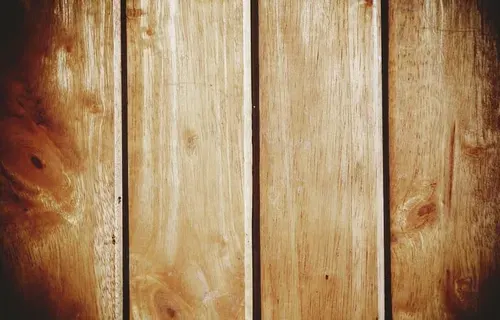
2. Distressing with Tools
Distressing wood with tools is a popular technique for creating an aged, rustic look. To achieve this, you can use a hammer, chains, nails, or other tools to create dents, scratches, and indentations in the wood’s surface. The idea is to mimic the wear and tear that would naturally occur over time. After distressing, you can apply a stain or paint to deepen the effects. This method is particularly effective for creating a vintage or farmhouse aesthetic and works well with furniture like tables and chairs.
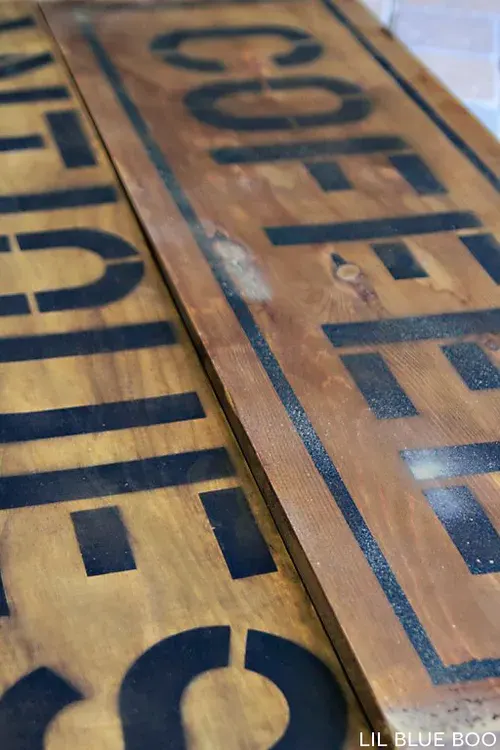
3. Whitewashing
Whitewashing is a technique used to create a weathered and rustic finish on wood. The process involves diluting white paint or chalk paint with water and then applying it to the wood. The result is a light, translucent finish that allows the wood grain to show through while giving it a faded, aged look. Whitewashing can be used to add a shabby chic or coastal vintage aesthetic to furniture, walls, or decorative pieces. For a more rustic look, you can apply a second coat or sand the piece to expose some of the original wood beneath.
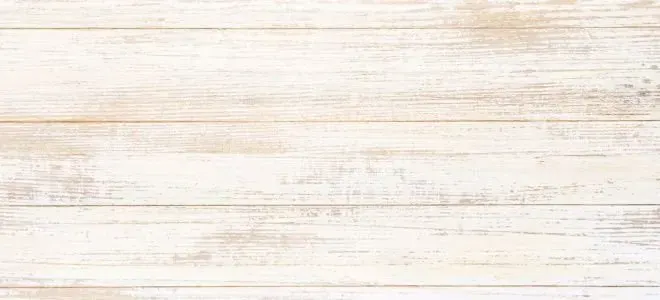
4. Staining for an Aged Patina
Applying a wood stain is a great way to mimic the natural aging process and give wood an aged patina. Darker stains, such as walnut or mahogany, can add depth to the wood’s grain, making it appear older. To age wood, apply the stain generously and then wipe off any excess. This method works well for creating a more dramatic, vintage look on furniture or flooring. For a more subtle effect, you can apply a lighter stain and layer it gradually until the desired vintage appearance is achieved.
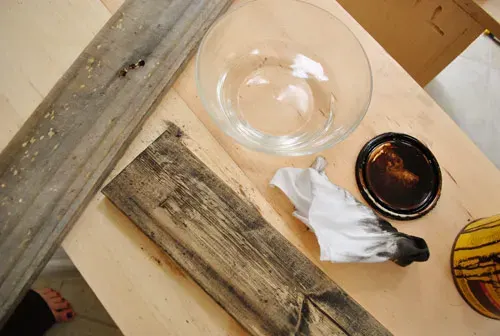
5. Vinegar and Steel Wool Solution
One of the most popular methods for aging wood is by using a vinegar and steel wool solution. To create this solution, soak steel wool in white vinegar for 24 hours, then strain the liquid and apply it to the wood. The vinegar reacts with the tannins in the wood, creating a weathered gray or brown effect that gives the wood an antique look. This technique is ideal for achieving a more natural, aged appearance and works particularly well on oak and other hardwoods. It’s a quick, easy way to replicate the effects of time on wood.
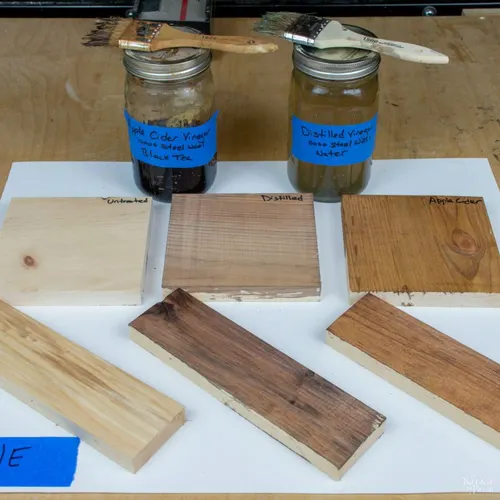
Quick Tips for Embracing How to Age Wood for a Vintage Look
1. Start with the Right Wood
Before beginning any aging process, it’s important to choose the right wood. Softwoods like pine, cedar, and fir tend to age more easily and beautifully than hardwoods. Their porous nature allows for better absorption of stains and treatments, leading to a more natural, weathered look. If you’re aiming for a vintage aesthetic, these woods will be easier to work with and show quicker results.
2. Test Techniques on Scrap Pieces
Before applying any aging technique to your main project, always test it on a scrap piece of wood. This will help you ensure the desired effect, whether it’s with vinegar and steel wool or sun exposure, and prevent any unwanted results. Testing beforehand will give you confidence and help you perfect your approach.
3. Combine Techniques for Depth
Don’t hesitate to combine different aging techniques to create a more complex, rich vintage look. For instance, you can first distress the wood using tools like hammers or chains, then apply a vinegar and steel wool solution for a weathered effect. Afterward, use a glaze or wax to add depth and richness to the surface.
4. Be Patient with Sun Exposure
Sun exposure can take time to achieve the perfect aged look, especially on softwoods. Place your wooden pieces outside in direct sunlight for weeks, rotating them occasionally to ensure even fading. Don’t rush the process—let the natural aging happen slowly for the most authentic vintage look.
5. Use Natural Staining Methods
For a more eco-friendly approach, try using natural ingredients like coffee, tea, or blackberries to stain your wood. These ingredients can give a warm, rich color that mimics the patina of aged wood. Additionally, using natural dyes and stains ensures that your piece remains free of harmful chemicals and has a sustainable, rustic appeal.
6. Don’t Forget to Seal and Protect
After aging your wood, make sure to apply a sealant or protective finish. This will help preserve the look and ensure the wood lasts longer, especially if it’s being used in furniture or outdoor applications. A matte or satin finish will maintain the vintage feel while offering protection from wear and tear.